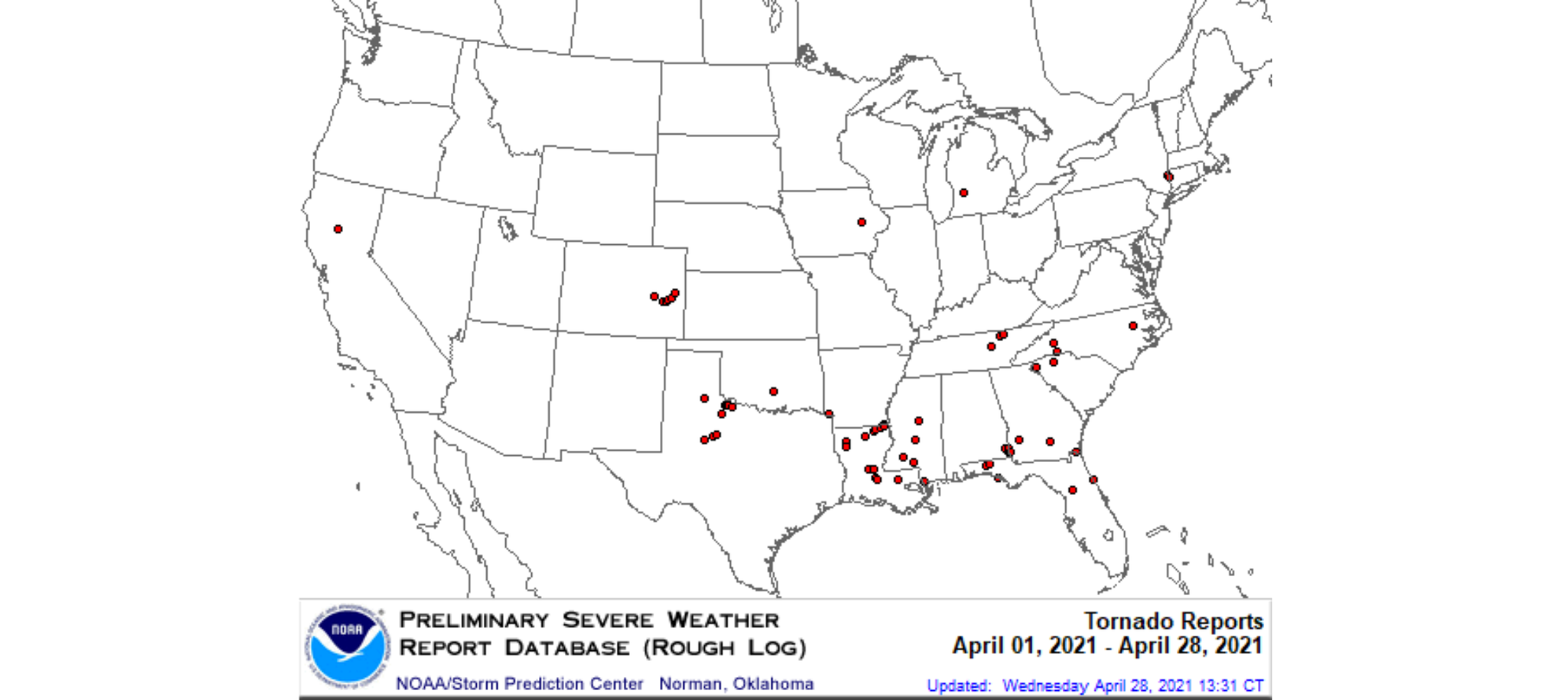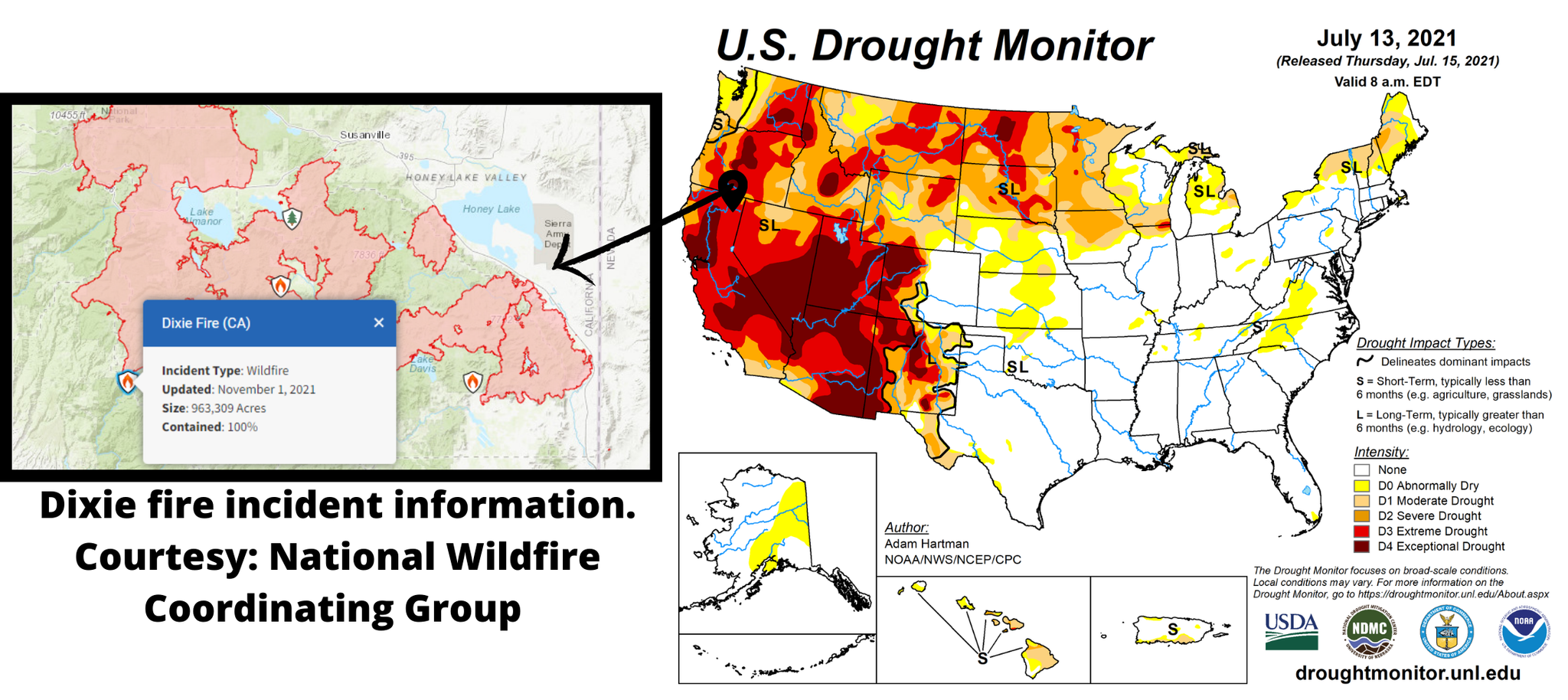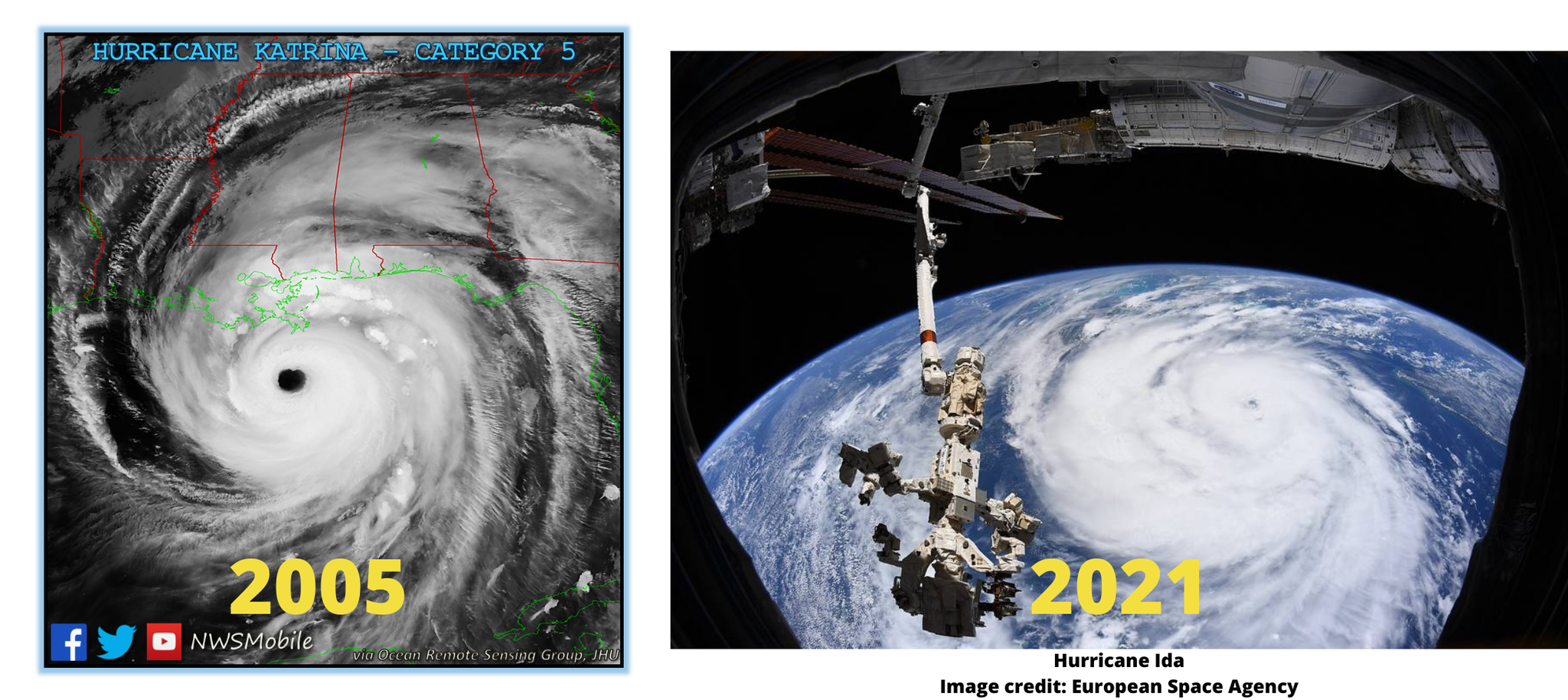Goodbye 2021, Pt. 2
This is a continuation of last Sunday's post in which I'm reviewing the wild 2021 weather. I'm diving into the spring severe weather season and the hot summer months when wildfires and hurricanes raged.
April
April came in with a bang to Oklahoma and Texas with baseball to softball size hail. Three hail storms developed on April 28th, which pelted Fort Worth and San Antonio, TX, and Norman, OK.
To give a sense of just how widespread and large the hail was across our area from the Rio Grande to San Marcos, here's an estimate based on radar & satellite data. The reds are1+", while the purples are 2+". We received reports of hail even larger than that in a few locations! pic.twitter.com/7Zcuy1t9w7
— NWS Austin/San Antonio (@NWSSanAntonio) April 29, 2021
In Fort Worth, the path of the largest hail spanned over 20 miles.
Baseball-sized hail fell in San Antonio, while four-inch hail fell in Sabinal and Hondo, TX. The hail damage is estimated to exceed $1 billion.
Another hailstorm in Oklahoma tracked over Norman, home of the populated University of Oklahoma. Meteorologists in Norman measured three-inch hail. The craziest part about the storm was that it fired hail-like missiles into the sides of homes and windows. Why? The storm was packed with 70mph winds. The damage swath totaled over 40 miles.
A destructive hailstorm moved across central Oklahoma during the evening of April 28th. The storm produced hail to the size of baseballs (some larger), especially across parts of Norman. #okwx #hail pic.twitter.com/fSreDEgJaI
— NWS Norman (@NWSNorman) April 29, 2021
What about tornadoes? April is the second month of the spring severe weather season. Across the US, there were only 73 preliminary tornado reports. This is less than half of the typical average of 155 tornadoes for April, and the fewest number of tornadoes in April since 1993.
April 7th was significant when an outbreak of 15 tornadoes occurred in Louisiana, Mississippi, and Alabama. All were rated either EF-0 or EF-1 with damages mainly to homes, businesses, and vehicles.
April was an exciting month for me. On the 23rd, I saw five tornadoes! It was the first time I had ever seen one. They were picturesque twisters, touching down over open fields near Lockett, TX, and caused minimal damage. One tornado developed right by a rainbow.

In total, during the April 23rd and 24th severe weather episodes, 13 total tornadoes formed. Finally, April 27th saw 12 tornadoes combined in Colorado, Oklahoma, and Texas. These tornado reports are available courtesy of the NOAA National Centers for Environmental Information.
May
The Atlantic Hurricane season kicked off in May with the development of Tropical Storm Ana. The storm formed on the 19th but didn't strengthen into a tropical storm until the 23rd. While Ana stayed out at sea, its formation demonstrates that tropical systems are possible outside of the regular hurricane season. The tropical storm was also the first of 21 storms to develop during the 2021 season. NOAA ranks this season as the third most active hurricane season on record.
June
Wildfire season raged in June for the western US. By the early summer, 93% of the west was in a drought, and then a record-shattering heat wave occurred.
Between June 26th and 29th, dozens of cities broke heat records. Temperatures in Portland, OR reached 108° on June 26th, 112° on June 27th, and 116° on June 28th. This set record highs for the city.
Seattle, WA., known for its cloudy skies and cooler temps, saw three consecutive days of triple-digit temperatures. 108° was recorded on the 28th, breaking a previous record of 105° set in July 2009.
June saw five tropical storms developing in the Atlantic in addition to the beginnings of hurricane Elsa. The National Hurricane Center began monitoring a tropical wave on June 29th over the Cape Verde Islands. The wave wouldn't strengthen to a hurricane until early July.
July
Remember Elsa? On July 1st, the tropical system was named. By July 2nd, Elsa strengthened into the first hurricane of the 2021 season. Elsa impacted Cuba as a category 1 hurricane and made landfall in Florida as a tropical storm.

The western drought worsened in July. On the 13th, the Dixie fire started which would burn close to 1 million acres through October 25th. This was the fire responsible for burning the sequoia trees. The Dixie fire was the second largest single wildfire in the state's history. In total, 2.5 million acres were burned in California this year.
August
When we think of devastating and costly hurricanes, Hurricane Katrina from 2005 comes to mind. Now, that anniversary coincides with the landfall of Hurricane Ida.
On the 16th anniversary, August 29th, of Hurricane Katrina, rapidly intensifying category 4 hurricane Ida made landfall in Louisiana. Sustained winds of 150mph and catastrophic storm surge, flooding, and tornadoes devastated the state. Louisiana reported 28 deaths because of the hurricane.

Even once the hurricane weakened upon moving inland, the path of destruction continued. Ida's remnants moved into the northeast leading to deadly flooding. New York City even felt some of those impacts. Rainfall rates overcame what the city's drainage could handle. Subways flooded, and many people drowned in their basement apartments. Over four dozen people died in New York, New Jersey, Pennsylvania, and Connecticut.
Next post: Overwhelmed yet by the weather events of 2021? Hopefully not, because the year is not over. More storms, tornadoes, and record-shattering events unfolded in the final four months of 2021. Stay tuned.

0 Comments Add a Comment?